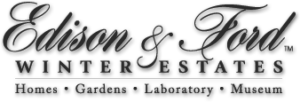
Admission:
$30/per person (historian led tour)
$25/per person (self-guided tour)
Tour Options: http://www.edisonfordwinterestates.org/about/tour-options/
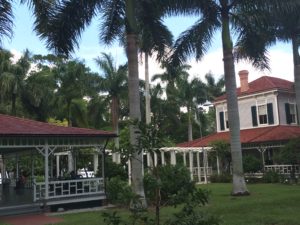

- Adults: $15.00
- Tenns (13-19): $12.00
- Children (6-12): $8.00
- Children (5 and under): FREE
- Link: http://www.edisonfordwinterestates.org/about/tour-options/lab-museum-tour/

- Tuesdays 10:30am
- Adults: $40
- Teens (13-19): $30
- Children (6-12): $16
- Link: http://www.edisonfordwinterestates.org/about/tour-options/inside-the-lab-tuesdays-10-30-a.m./
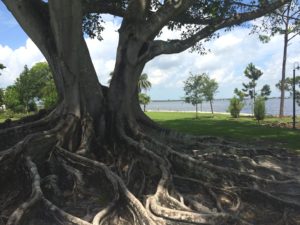
- Adults: $50
- Children: $35
- Sunset cruises available
- For help call (239) 919-2965
- Visit: http://www.edisonfordwinterestates.org/about/tour-options/river-cruises-daily/
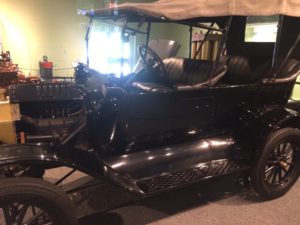
- Mondays at 10:30am
- Adults: $40
- Teens (13-19): $30
- Children (6-12): $16
- Visit: http://www.edisonfordwinterestates.org/about/tour-options/automotive-tour-mondays-10-30am/
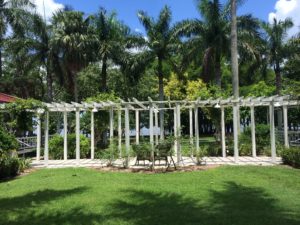
- Wednesdays 10:30am
- Adults: $40.00
- Teens (13-19): $25
- Children (6-12): $15
- Children (5 and under): FREE
- Visit: http://www.edisonfordwinterestates.org/about/tour-options/garden-tours-wednesdays-10-30-a.m./

- Thursdays 11:00am
- Adults: $50
- Teens (13-19): $35
- Children (6-12): $20
- Visit: http://www.edisonfordwinterestates.org/about/tour-options/inside-the-homes-tour-thursdays-10-30-a.m./

- Wheelchairs are first come first serve
- Wear comfortable walking shoes
- Picnic areas are available with tables
- Shops are available through the Museum Store, Garden Shoppe and Historic Cottage Shop
- Edison Ford Guidebooks are $3.00
- Smoking is not permitted on historical grounds
- Edison & Ford Winter Estates Grounds Map
- Virtual Tour: http://www.in360.com/tours/tour.php?MLS=edison-home&enlarge=1


The Main house’s original design included a kitchen and dining room in the North wing. In 1906, Edison remodeled the area to serve as family bedroom suites. Includes a library, study, and Edison’s den.
Guest House includes family room, dining rooms, and kitchen.
Caretaker’s House is the oldest structure at Edison/Ford. A one room section of the house existed when Edison purchased the property and he expanded it over the years.
The pool complex was constructed in 1910 and now reflects the 1928 remodel with the add of the Tea and Bath House.
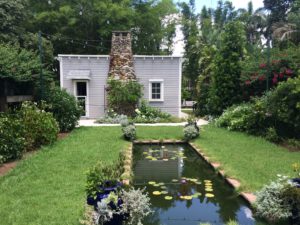
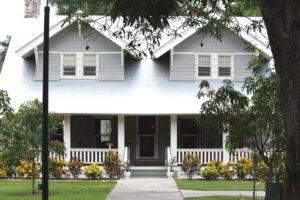
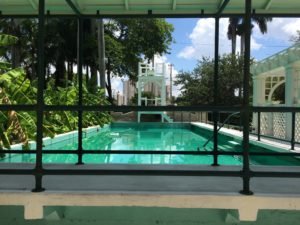

Ford purchased the home in 1916 to vacation with Edison. This home has beautiful views of the Caloosahatchee River.
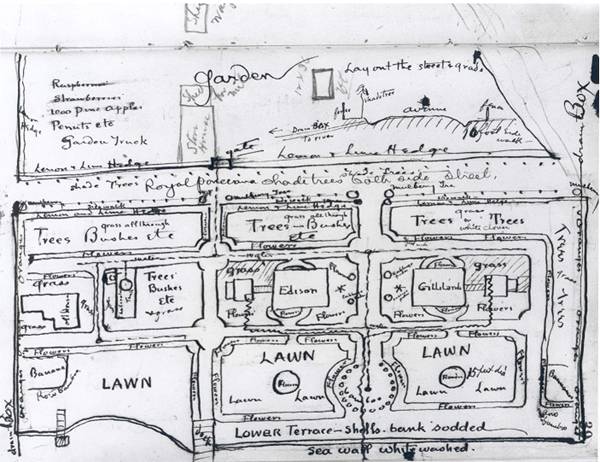
Edison’s own garden drawing
Landscape at Edison/Ford is dominated by the huge Ficus trees that were planted by Edison, Ford, and Henry Firestone during their quest to find a domestic source of rubber. The Heritage Garden is the original truck garden of fruits and vegetables used by the families for food.
Edison is home to more than 1,700 plants. Highlights include the Banyan tree planted around 1925, sausage trees, eucalyptus trees, kapok trees, tropical snowball, mango trees, citrus, sapote, tamarind, papaya, lychee, longon, starfruit, and king’s mantle.
Edison’s moonlight garden was designed in 1929 by landscape architect Ellen Biddle Shipman. Also, bamboo is grown throughout the estates which Edison used in his light bulbs.
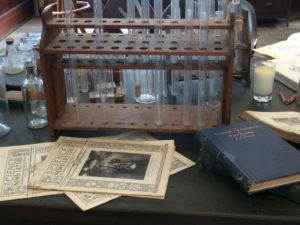
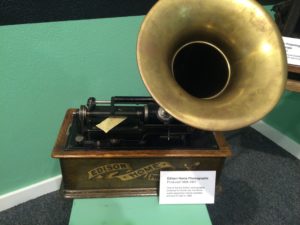
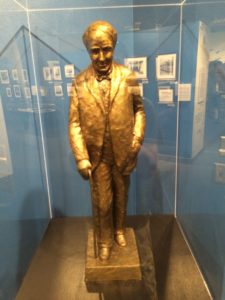
History about Thomas Alva Edison: http://www.edisonfordwinterestates.org/collections/biographies/thomas-edison/
History about Henry Ford: http://www.edisonfordwinterestates.org/collections/biographies/henry-ford/
Historic timeline of Fort Myers: http://www.edisonfordwinterestates.org/collections/biographies/fort-myers/
Education through Edison/Ford: http://www.edisonfordwinterestates.org/education/
Information and Edison’s garden drawing were provided by: http://www.edisonfordwinterestates.org/
Pictures provided by Ian Weber
Shanna Weber

